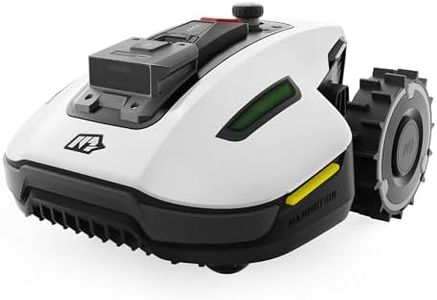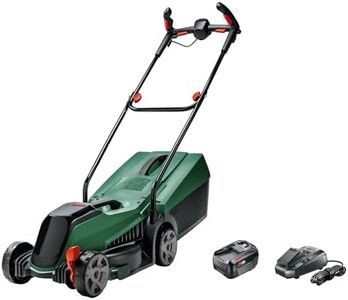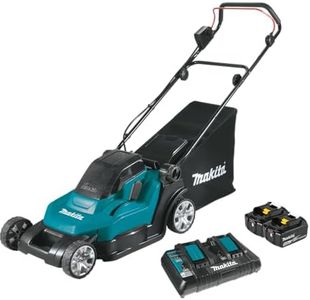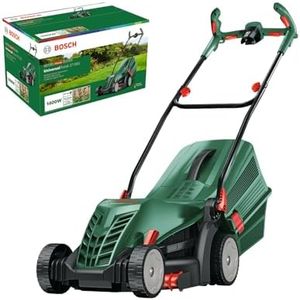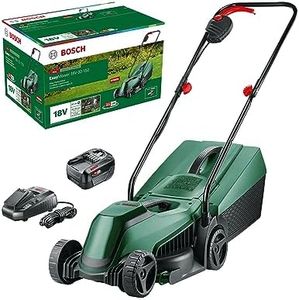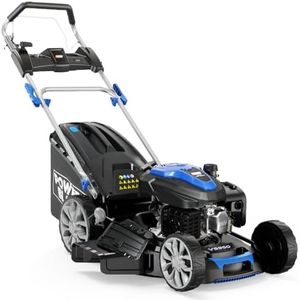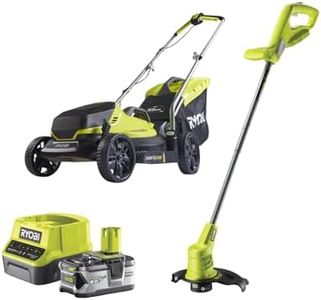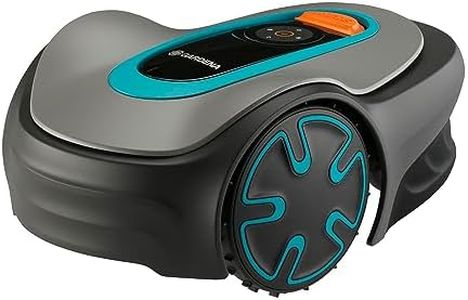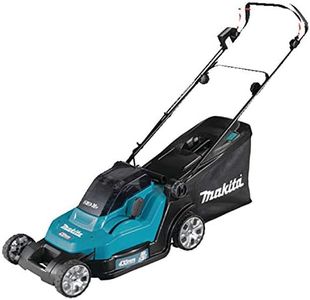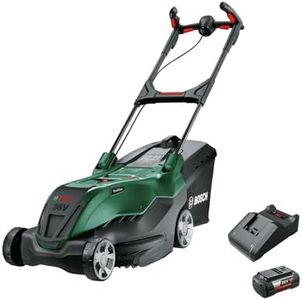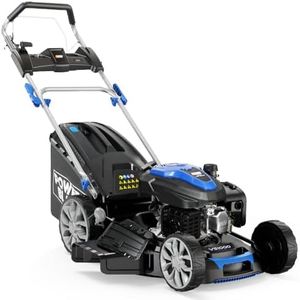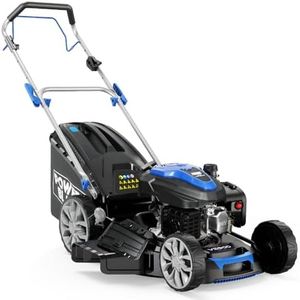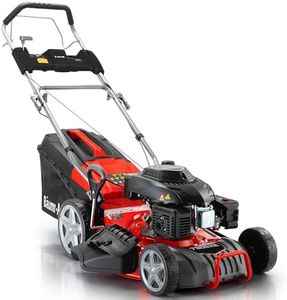We Use CookiesWe use cookies to enhance the security, performance,
functionality and for analytical and promotional activities. By continuing to browse this site you
are agreeing to our privacy policy
10 Best Lawn Mowers
From leading brands and best sellers available on the web.Buying Guide for the Best Lawn Mowers
Choosing the right lawn mower can make caring for your yard much easier and more enjoyable. Before you start shopping, think about the size and terrain of your lawn, how much effort you want to put into mowing, and any environmental concerns you might have. By understanding the important features and specs, you can select a mower that fits your needs, making mowing safer, faster, and more comfortable.Power SourceThe power source refers to how the mower is fueled: manual (push reel), electric (corded or battery), or gas-powered. This is important because it directly affects the mower's power, noise, maintenance, and convenience. Manual mowers are eco-friendly and quiet but require more effort, suitable for small, flat lawns. Electric mowers are quieter, lighter, and easier to start, making them a good fit for small to medium-sized yards, but their runtime can be limited by battery life or cord length. Gas-powered mowers offer the most power and are ideal for larger or tougher lawns, but they're louder, require more maintenance, and produce emissions. Pick a power source that matches your lawn's size and your comfort with upkeep.
Cutting WidthCutting width indicates how wide a path the mower cuts in one pass. This matters because a wider cutting width means you can finish mowing faster, but it often results in a heavier or less maneuverable mower. Small lawns can do well with narrow cutting widths (under 16 inches), medium lawns usually suit widths around 16-21 inches, and large lawns benefit from widths over 21 inches. Choose a cutting width that balances efficiency and ease of handling for your lawn's size and obstacles.
Cutting Height AdjustmentCutting height adjustment lets you change how close to the ground the mower cuts your grass. This is important because different grass types and seasons require different mowing heights for healthy growth. Mowers offer varying ranges, typically from 1 to 4 inches, and modes of adjustment (individual wheel or single lever). If you enjoy tailoring your lawn's appearance or need flexibility, look for a mower with multiple, easy-to-change height settings.
Drive Type (Push vs. Self-Propelled)Drive type describes how the mower moves: you either push it manually or it moves on its own with self-propelled features. This spec matters because it impacts how much effort you need to put in, especially on sloped or larger lawns. Push mowers are lighter and give you more control, best for small, flat areas. Self-propelled mowers help with larger yards or hilly terrain by providing powered wheels, reducing manual effort. Think about your lawn's size, slope, and your physical comfort when choosing.
Grass Clipping Management (Bagging, Mulching, Discharge)This refers to how the mower handles the grass clippings: collecting in a bag, mulching finely and returning to the lawn, or discharging to the side or rear. It's important because it affects cleanup, lawn health, and your mowing routine. Bagging keeps your yard tidy and helps with allergies, mulching nourishes the lawn by returning nutrients, and discharge is the quickest but can leave clumps. Choose a mower that offers the clipping option that fits your yard maintenance habits and desired lawn health.
Weight and ManeuverabilityWeight and maneuverability relate to how easily you can push, lift, or turn the mower. Heavier mowers can be more stable but harder to move, while lighter ones are easier to handle around obstacles. For small spaces or lawns with many trees and beds, a lighter, more agile mower is ideal. For wide open lawns, weight is less of an issue. Think about your strength, storage, and yard layout to find a mower that's comfortable for you to use.
